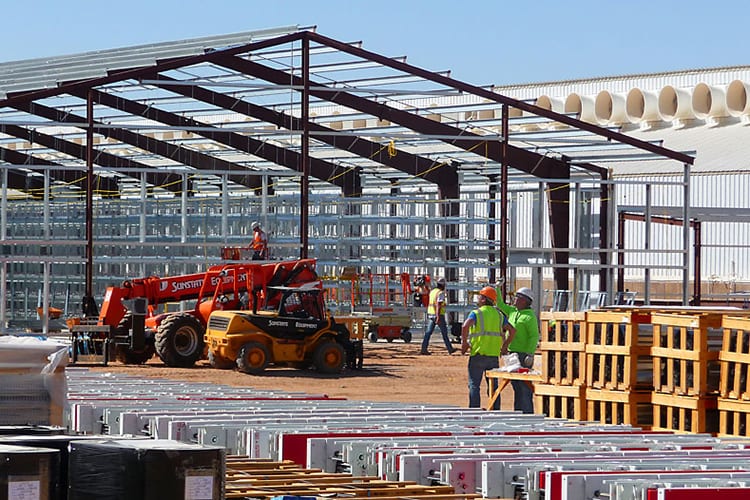While cities and states often rely on multi-year tax incentives to lure economic development, Native Nations and Communities can offer incentives and tax breaks that never expire. For example, in the Ak-Chin Indian Community’s industrial park, Santa Cruz Commerce Center, there are no real property taxes, no taxes on inventories or equipment, and no city or county taxes. Moreover, because Ak-Chin owns its own electric and water/wastewater utilities, energy costs are significantly lower than in nearby cities.
Nonetheless, often a lack of understanding of how tribal lands are managed can preclude Native Nations from being considered in location decisions. It is the unique nature of tribal lands that they are held in trust by the federal government, so an investor cannot buy or sell reservation land. Instead, a developer or business enters into an underlying land lease on which an owner-built, or depending on the tribe, a build-to-suit project can be developed.
In a boom market like the one we’re in now, it is easy to focus on the familiar course of land acquisition. But one only has to look back at 2008 to remember that tying up a lot of capital in assets that cannot be easily liquidated to accommodate shifting markets makes leasing much more appealing than buying.
Still, regardless of the financial incentives, some investors find the process of developing on tribal lands taxing in other ways, believing that the development process will be too long and too cumbersome. While some tribes have not established clear development guidelines, tribes like Ak-Chin have published its development process for Santa Cruz Commerce Center. What’s more, the Ak-Chin Industrial Park Board acts as a tenant advocate to streamline approval processes for zoning, permitting and design. These advantages can speed projects to market. Just ask Hickman’s Family Farms. According to Billy Hickman, Vice President of Operations, “Their ability to craft a customized lease allowed us to amortize construction costs over the length of a long-term lease and have a facility built to our specifications in just 10 months,” said Hickman.
Since opening its original facility in Santa Cruz Commerce Center in 2003, the Maricopa location of Hickman’s has been steadily growing its operations. Aided by the tax breaks on its buildings and equipment , Hickman’s facilities have grown from a processing plant and four henhouses to adding a fifth poultry house in 2005. In December 2013, Hickman’s expanded again to add another 90,000SF for two more poultry houses and to increase the total laying hen population to 1.7 million. “The financial savings we realized in our Maricopa facility enabled us to build our facility in Arlington,” said Hickman.
Considering all the positive financial factors some Native environments can offer, including Native lands in your site search can certainly make the burden of development less taxing.





